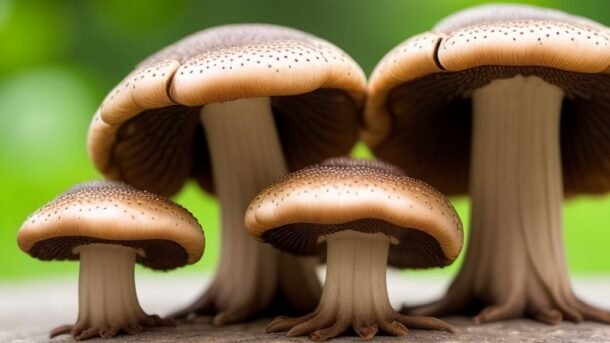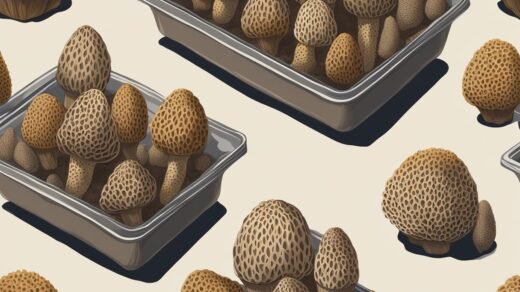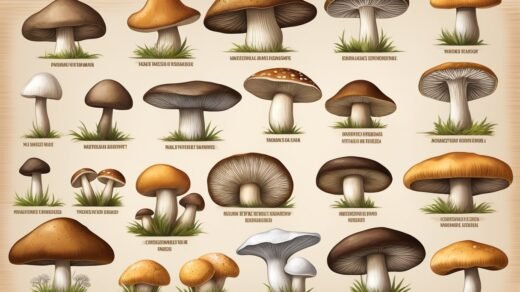Chestnut mushrooms are a delicious addition to any meal and can be easily grown at home. They have a nutty and earthy flavor that pairs well with a variety of dishes. While growing mushrooms may seem intimidating, it is actually a simple process that requires minimal effort and equipment.
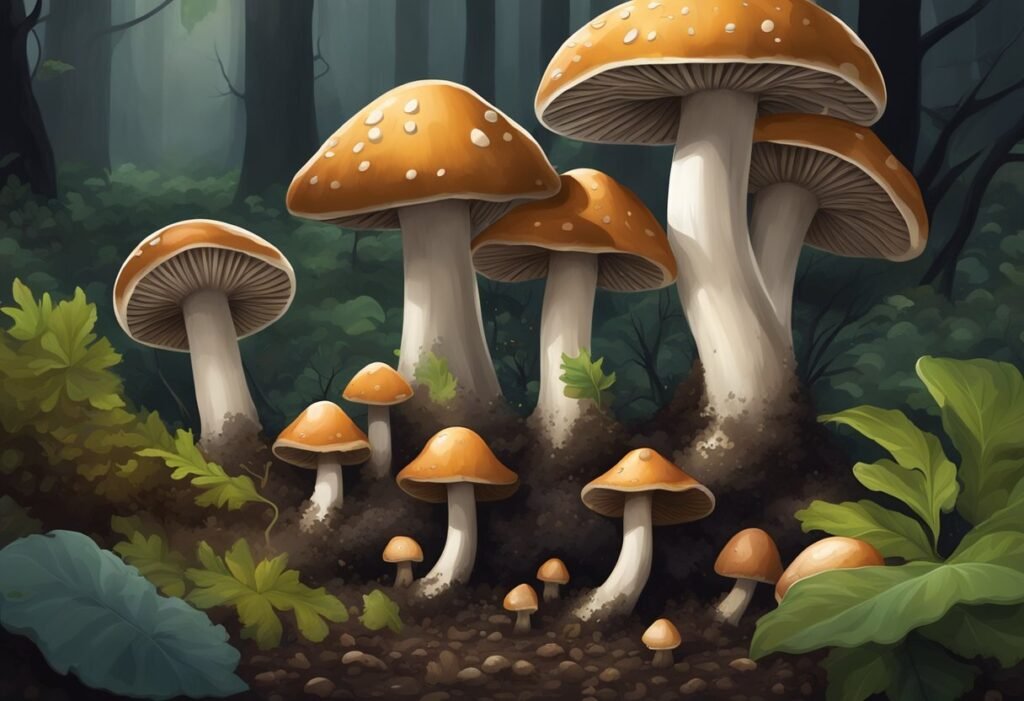
To grow chestnut mushrooms, one must first obtain mushroom spawn or spores. These are the reproductive bodies of mushrooms that contain all the necessary elements required to form new fungi. Once the spawn has been obtained, it can be planted in a substrate of sawdust or grain and allowed to incubate in a warm and dark environment. After a few weeks, the mycelium will have grown and the mushrooms will begin to fruit.
While growing chestnut mushrooms is relatively easy, proper identification of wild mushrooms is crucial for safe harvesting and consumption. When foraging, always confirm the mushroom’s identity before eating it. When preparing and handling chestnut mushrooms, take care to wash your hands after handling them as they can stain skin or clothing. With a little bit of knowledge and effort, anyone can grow their own chestnut mushrooms and enjoy their delicious flavor in a variety of dishes.
Understanding Chestnut Mushrooms
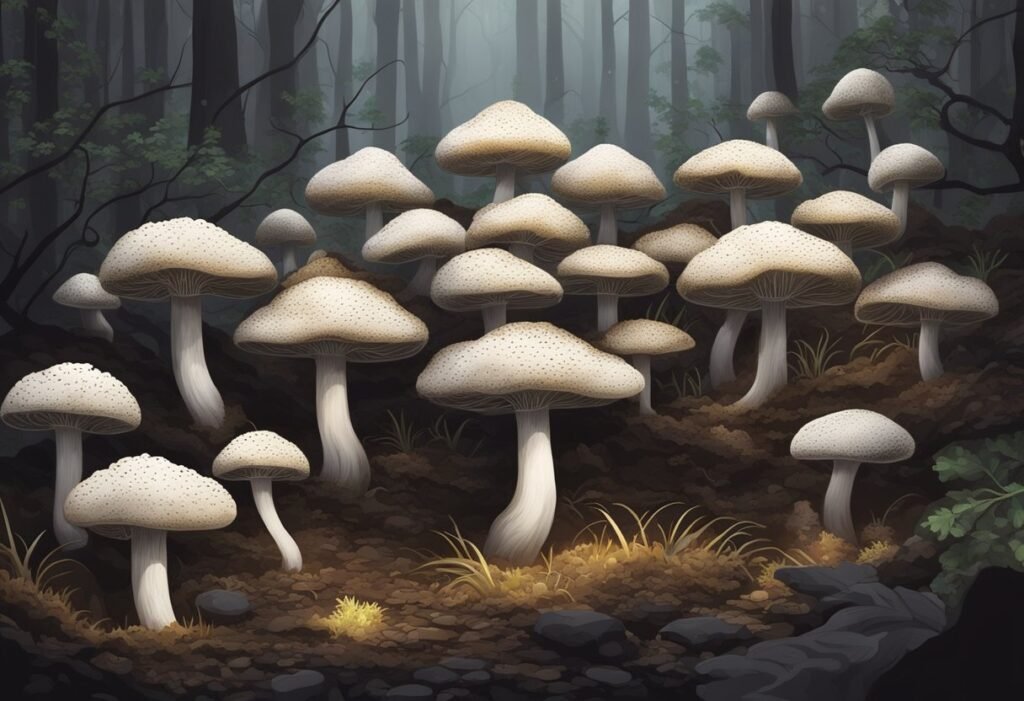
Chestnut mushrooms, also known as Pholiota adiposa, are a type of edible mushroom that can be grown at home. They are native to Europe and North America, and are known for their nutty and slightly sweet flavor.
Here are a few key facts to help you better understand chestnut mushrooms:
- Appearance: Chestnut mushrooms have a cap that is typically 3-10 cm in diameter, with a yellow-brown color and a slightly convex shape. The stems are also yellow-brown in color and can be up to 10 cm long.
- Nutritional Value: Chestnut mushrooms are low in calories and high in fiber, vitamins, and minerals. They are a good source of potassium, copper, and selenium, and are also rich in antioxidants.
- Growing Conditions: Chestnut mushrooms can be grown indoors or outdoors, and require a substrate made from hardwood sawdust. They prefer temperatures between 18-22°C and high humidity levels.
- Harvesting: Chestnut mushrooms can be harvested when the caps are fully open and the gills are visible. It’s important to harvest them before the caps start to flatten out, as this can indicate that the mushrooms are overripe.
Overall, chestnut mushrooms are a delicious and nutritious addition to any diet, and can be easily grown at home with the right conditions and care.
Ideal Conditions for Growth

Temperature and Humidity
Chestnut mushrooms require specific temperature and humidity conditions to grow properly. The ideal temperature for incubation is around 68°F (20°C). Once the mycelium has colonized the substrate, the temperature can be lowered to around 55-60°F (13-16°C) for fruiting. The humidity level should be kept between 85-95% throughout the growing process.
It is important to note that chestnut mushrooms are sensitive to fluctuations in temperature and humidity. Sudden changes in these conditions can lead to stunted growth or even death of the mushrooms. Therefore, it is recommended to maintain a stable environment using a humidifier and thermometer.
Lighting Requirements
Unlike some other mushrooms, chestnut mushrooms do not require light to grow. In fact, exposure to direct sunlight or bright artificial light can be harmful to their growth. They prefer a dimly lit environment with indirect light.
It is recommended to use a low wattage bulb or natural light from a nearby window. This will provide enough light for the mushrooms to grow without causing any harm.
In summary, chestnut mushrooms require specific temperature and humidity conditions for optimal growth. They prefer a dimly lit environment with indirect light. By maintaining a stable environment, growers can ensure a successful harvest of chestnut mushrooms.
Growing Process
Growing chestnut mushrooms requires a bit of patience, but the process is relatively straightforward. The following subsections detail the steps involved in growing these delicious fungi.
Spawning
The first step in growing chestnut mushrooms is to obtain spawn. Spawn is essentially mushroom mycelium that has been grown on a substrate such as grain or sawdust. Once you have obtained the spawn, you will need to mix it with a substrate to create a growing medium. Common substrates include sawdust, straw, and compost.
Casing
After the spawn has colonized the substrate, it is time to add a casing layer. The casing layer is a layer of non-nutritive material such as peat moss or vermiculite that is added to the top of the substrate. This layer helps to retain moisture and provides a surface for the mushrooms to grow on.
Fruiting
Once the casing layer has been added, the growing container should be placed in a cool, dark location for several days to allow the mycelium to recover from the disturbance. After this period, the container should be moved to a location with plenty of light and fresh air. The mushrooms will begin to form pinheads, which will eventually develop into mature mushrooms.
It is important to keep the growing medium moist throughout the fruiting process. This can be achieved by misting the container with water or by placing a humidifier nearby. Once the mushrooms have matured, they can be harvested by gently twisting and pulling them off the substrate.
Overall, growing chestnut mushrooms is a rewarding experience that requires a bit of effort and patience. By following the steps outlined above, anyone can enjoy the delicious taste of fresh, home-grown mushrooms.
Harvesting and Storage
When to Harvest
Chestnut mushrooms are ready to harvest when the caps are fully expanded and have a diameter of about 2-3 inches. The gills underneath the cap should be visible but not yet releasing spores. It’s important to harvest chestnut mushrooms at the right time to ensure the best flavor and texture. If left too long, the caps will flatten out and the gills will start to release spores, making them less appealing to eat.
How to Store
After harvesting, chestnut mushrooms should be stored properly to ensure they stay fresh for as long as possible. The best way to store them is to place them in a paper bag or wrap them in a paper towel and put them in the refrigerator. Avoid storing them in plastic bags, as this can cause them to sweat and become slimy.
Chestnut mushrooms can last up to a week in the refrigerator, but it’s best to use them as soon as possible for the best flavor and texture. If you have more than you can use in a week, consider freezing them. To do this, simply slice the mushrooms and spread them out on a baking sheet. Put the sheet in the freezer until the mushrooms are frozen, then transfer them to a freezer-safe container or bag. Frozen chestnut mushrooms can last up to six months.
Overall, harvesting and storing chestnut mushrooms is relatively simple. By following these tips, you can ensure that your mushrooms stay fresh and delicious for as long as possible.
Potential Challenges
Pests and Diseases
Like any other crop, chestnut mushrooms are vulnerable to pests and diseases. Some of the most common pests that can attack chestnut mushrooms include mites, flies, and beetles. These pests can cause damage to the mushrooms and reduce their yield. To prevent pest infestations, it is important to maintain a clean growing environment and practice good hygiene. Additionally, you can use natural pest control methods such as neem oil or insecticidal soap to keep pests at bay.
Diseases can also pose a threat to chestnut mushrooms. Some of the most common diseases that can affect chestnut mushrooms include bacterial blotch, verticillium wilt, and mushroom virus X. To prevent the spread of diseases, it is important to maintain a clean growing environment and practice good hygiene. Additionally, you can use disease-resistant mushroom strains and avoid using contaminated substrate.
Common Mistakes
Growing chestnut mushrooms can be challenging, especially for beginners. Some of the most common mistakes that people make when growing chestnut mushrooms include:
- Overwatering: Overwatering can lead to waterlogged substrate, which can cause root rot and other fungal diseases. It is important to maintain proper moisture levels and avoid overwatering.
- Underwatering: On the other hand, underwatering can cause the mushrooms to dry out and reduce their yield. It is important to maintain proper moisture levels and avoid underwatering.
- Poor ventilation: Poor ventilation can cause the mushrooms to become damp and increase the risk of fungal diseases. It is important to maintain proper ventilation and avoid overcrowding the growing area.
- Using contaminated substrate: Using contaminated substrate can introduce pests and diseases into the growing environment. It is important to use clean, sterilized substrate to prevent contamination.
By avoiding these common mistakes and taking steps to prevent pests and diseases, you can increase your chances of growing healthy, productive chestnut mushrooms.

